Thrive in 2025 (Part 1)
As we step into the challenges and opportunities of 2025, we are reminded of our identity in Christ. We are saints, overcomers, and victorious in Him.
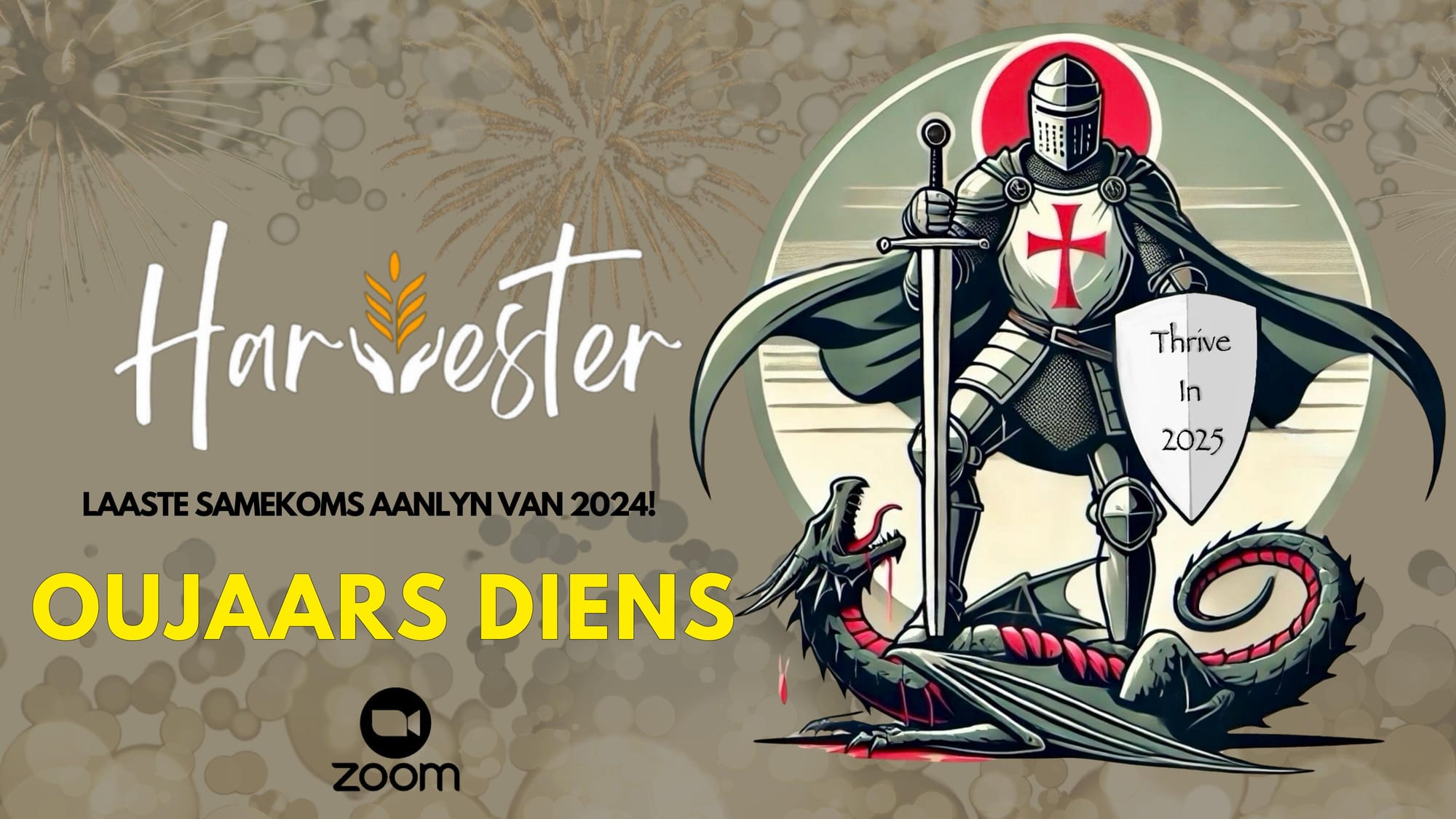
As another year draws close, we find ourselves at the crossroads of reflection and anticipation. Each year, with its unique blend of triumphs and trials, adds another chapter to the story of our lives. Whether it has been a season of joy or challenge—or perhaps a mix of both—the turning of the calendar offers a sacred pause. It’s a moment to assess where we’ve been, recalibrate our hearts, and ensure we’re still aligned with our holy calling and election in Christ. This is more than a reflection on time—it’s a call to step confidently into God’s purpose for our lives in the year ahead.
“I write to you, young men, because you have overcome the wicked one.” 1 John 2:13
As we step into the challenges and opportunities of 2025, we are reminded of our identity in Christ. We are saints, overcomers, and victorious in Him. In the New Testament, believers in Christ are called "saints" approximately 60 times. The Greek word used is ἅγιοι (hagios), which means "holy ones" or "set apart ones."
This isn’t a title we earn—it’s a calling we receive through Christ’s righteousness. Our journey is to keep, grow, and walk in that victory, standing firm against the schemes of the wicked one: the devil, the serpent, the tempter, and the deceiver.
A Journey Through Symbolism: The Serpent and Victory in Christ

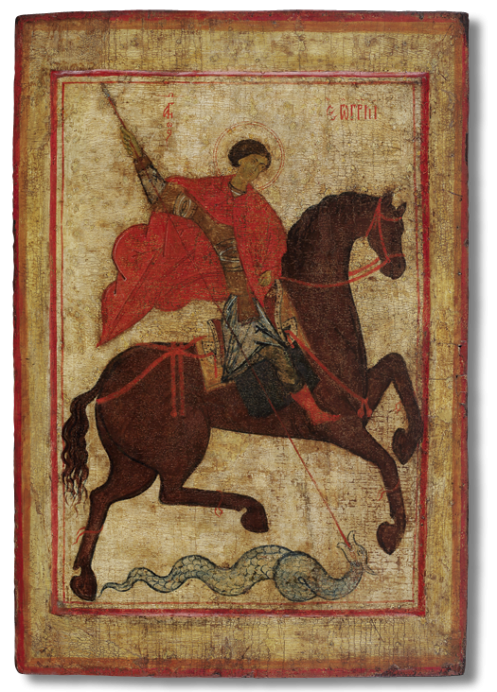
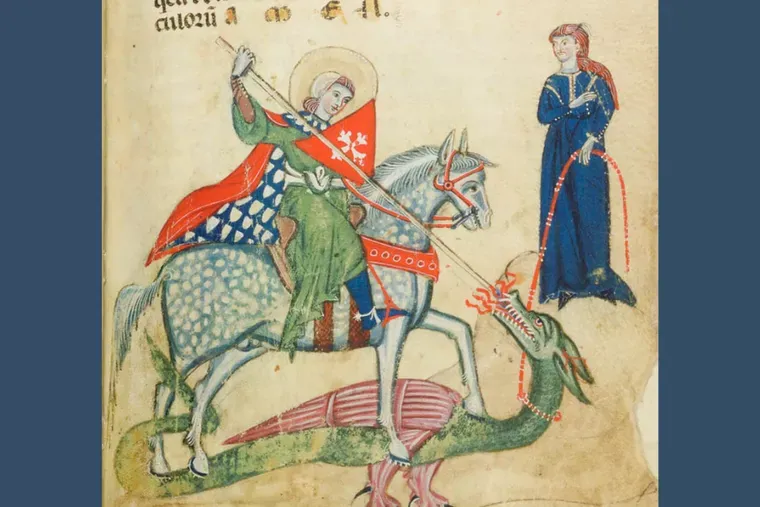
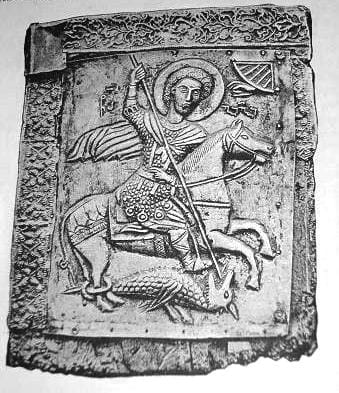
Google "Saint Killing Dragon" and you will get numerous images.
Art has been seen as a mirror image of humankind's thoughts and trends for centuries. This seemingly popular and recurring image of a saint killing the serpent is reminiscent of our calling and destiny as believers!
Almost every action movie features a familiar storyline: a young, inexperienced novice faces a dark and formidable enemy. To prepare for the inevitable showdown, the hero begins an intense training journey to gain the skills to confront this "dragon" of evil. As the plot unfolds, the forces of darkness relentlessly try to derail the hero's progress, throwing obstacle after obstacle in their path. Then comes the climactic battle. At first, the hero lands a few impressive blows, but the tide inevitably turns, leaving him beaten down and on the brink of despair. When all seems lost, they receive a moment of supernatural intervention—newfound strength, profound wisdom, or encouragement from their saintlike, wise mentor. Empowered by this turning point, the hero rises again and ultimately conquers the dragon of darkness.
Many action and fantasy movies embody the classic hero’s journey, where the protagonist faces overwhelming darkness, undergoes transformation, and ultimately overcomes evil with courage, faith, and guidance.
In The Lord of the Rings trilogy, Frodo Baggins, a humble hobbit, is tasked with destroying the One Ring, the source of great evil. His journey is fraught with trials, temptations, and battles, but with the help of wise mentors like Gandalf and faithful companions like Sam, he overcomes insurmountable odds to fulfill his mission.
Similarly, The Hobbit follows Bilbo Baggins, another unlikely hero, as he leaves his comfortable life to help reclaim the dwarves' homeland from the dragon Smaug. Through bravery and selflessness, Bilbo plays a pivotal role in uniting different races against a greater evil.
The Chronicles of Narnia series, particularly The Lion, the Witch, and the Wardrobe, centers on the Pevensie siblings, who enter the magical land of Narnia. Guided by Aslan, the Christ-like lion, they battle the White Witch and bring restoration to Narnia. Each sibling undergoes personal growth, learning lessons of faith, sacrifice, and courage.
We find the same storyline in our lives!
The same storyline of struggle and triumph we see in epic movies mirrors the battles we face in our own lives. Many people wrestle with feelings of inferiority, unhealthy weight gain, discontentment, addictions, or the challenges of achieving financial, business, or vocational success. Others battle with self-consciousness, doubting their worth or abilities, much like the novice heroes in these stories.
The Bible, a collection of similar real-person stories, explains this symbolism in a deep and multifaceted way, pointing us toward the ultimate victory in Christ.
Moses and the Staff: Authority Over the Serpent
In Exodus 4:1-3, God poses a pivotal question to Moses, asking, “What is that in your hand?” To which Moses replies, “A rod.” Following this, God commands Moses to throw the rod to the ground, transforming it into a serpent. Subsequently, when Moses retrieves it by the tail, it reverts to its original form as a staff. This encounter is significant as it marks the moment when the serpent, traditionally associated with fear and defeat, is redefined to represent the believer's divine authority. It illustrates the power of Jesus, emphasizing that dominion exists even in the face of peril.
In the context of Pharaoh’s court, both Moses and the magicians conjure serpents, yet Moses’ serpent consumes the others, thereby illustrating God's supremacy. In this narrative, the serpent embodies the chaotic forces of evil, which are ultimately subdued and rendered powerless when placed under divine authority.
The Bronze Serpent: Healing and Judgment
In Numbers 21, when venomous snakes plagued the Israelites, God instructed Moses to create a bronze serpent and lift it on a pole. Those who looked at it in faith were healed. Here, the serpent is both the source of the problem (poison) and the solution (healing). This duality mirrors life itself—how our trials can become the avenue for God’s redemptive work if we look to Him.
Yet, this bronze serpent later becomes an idol in 2 Kings 18:4, requiring King Hezekiah to destroy it. This warns us of the danger of trusting symbols and methods rather than God Himself. Like Moses using his rod again when God said he should speak to the rock. We quickly fall into the trap of trusting methods, traditions, and magic rites, thinking that we will prevent bad omens through them. Faith is relational - you cannot use yesterday's faith. You must find fresh sustenance for your soul daily in His presence, the Bread of Life!
The Garden of Eden: The Serpent and the Fall
The serpent first appears in Genesis, coiled around the Tree of the Knowledge of Good and Evil. It represents temptation, duality, and death—not merely as extinction but as the cyclical “living death” of a fallen world: pleasure and pain, birth and decay, hope and despair.
The serpent entices humanity into rebellion, yet even here, God’s redemptive plan is set in motion. The promise of Genesis 3:15 declares that the "seed of the woman will crush the serpent’s head". This victory over the serpent is fulfilled in Christ.
Christ and the Serpent: Death Trampled by Death
Jesus directly connects Himself to the bronze serpent in John 3:14-15:
“As Moses lifted up the serpent in the wilderness, even so must the Son of Man be lifted up.”
On the cross, Christ embodies carrying the curse of sin, which is pictured in the duality of Christ and the serpent. He bears the curse of sin and death, yet in being “lifted up,” He becomes the source of eternal healing and victory. Medieval art often depicted this duality by placing a serpent at the base of the cross, with Christ triumphing above it.
This is the mystery of the gospel: Christ conquers death by entering into death itself. He tramples the serpent underfoot, fulfilling the promise of Genesis.
Modern Reflections: The Serpent in Medicine and Renewal

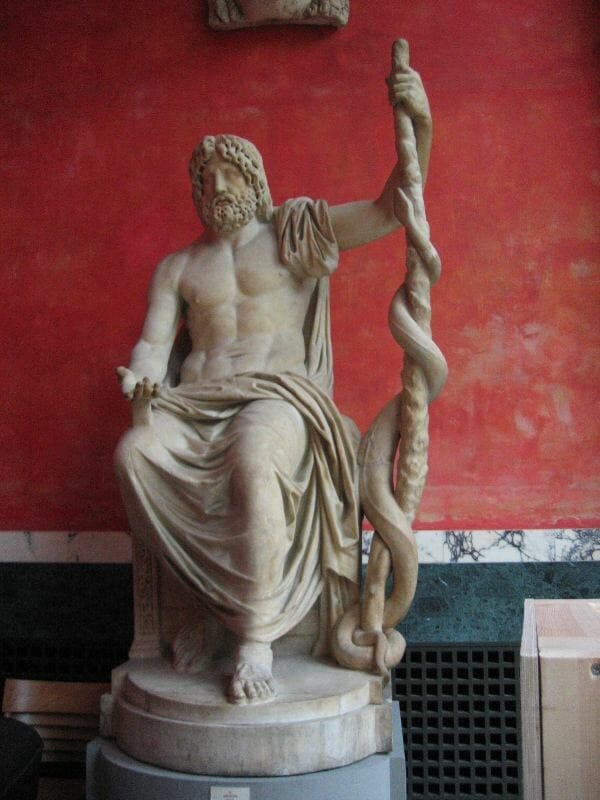
Rod of Asclepius
Even today, the serpent remains a symbol of healing and renewal in the medical field, as seen in the Rod of Asclepius. This echoes the biblical theme of the serpent as both poison and cure. The Greek word pharmakon captures this duality, meaning both “medicine” and “poison.” Similarly, life’s challenges, though they may wound us, often hold the seeds of our healing when we turn to Christ.
If medicine is not used with wisdom and understanding, it can become dangerous, addictive, and hence poison to our bodies, destroying our well-being.
The "ouroboros", the serpent eating its own tail, symbolizes eternal cycles of death and rebirth. Yet in Christ, we break free from this cycle. He offers not just renewal, but resurrection—new life that transcends the patterns of this fallen world.
"But the moment one turns to the Lord with an open heart, the veil is lifted and they see. Now, the “Lord” I’m referring to is the Holy Spirit, and wherever he is Lord, there is freedom. We can all draw close to him with the veil removed from our faces. And with no veil we all become like mirrors who brightly reflect the glory of the Lord Jesus. We are being transfigured into his very image as we move from one brighter level of glory to another. And this glorious transfiguration comes from the Lord, who is the Spirit." 2 Cor. 3:16-18 (TPT)
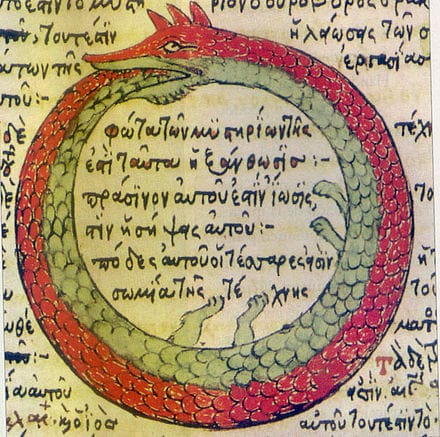
Thriving in Victory
To thrive as overcomers in 2025, we must:
- Recognize the Battle: The serpent symbolizes the presence of evil and temptation in the world, but also God’s ultimate authority over it.
- Claim the Victory: Like Moses’ serpent consuming the others, Christ has triumphed over all powers of darkness.
- Fix Our Eyes on Christ: As the Israelites looked to the bronze serpent, we look to Jesus, lifted up on the cross, for healing and salvation.
- Break the Cycle: Life in Christ breaks the ouroboros-like cycle of sin and death, replacing it with resurrection and eternal life.
Let us walk boldly as overcomers, trusting in the One who has conquered the serpent, crushed its head, and given us abundant life. Amen.

